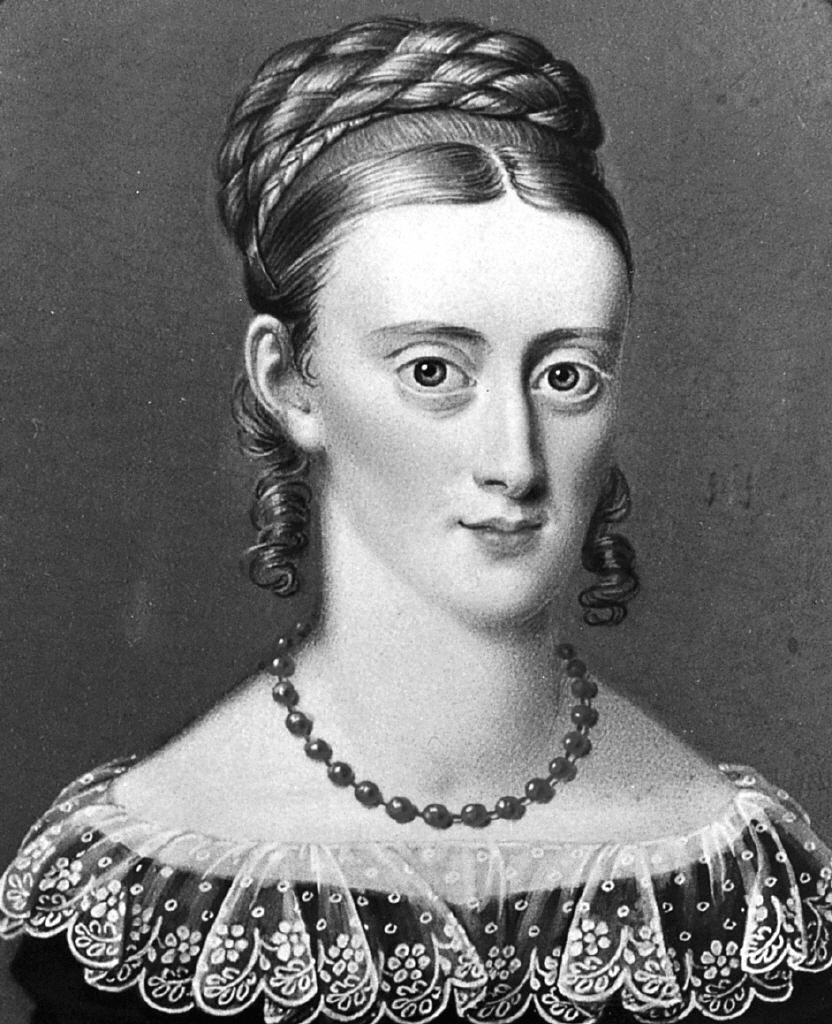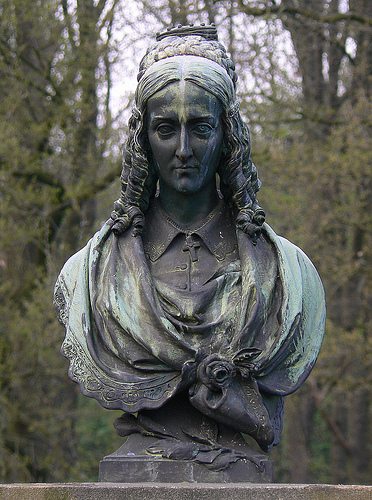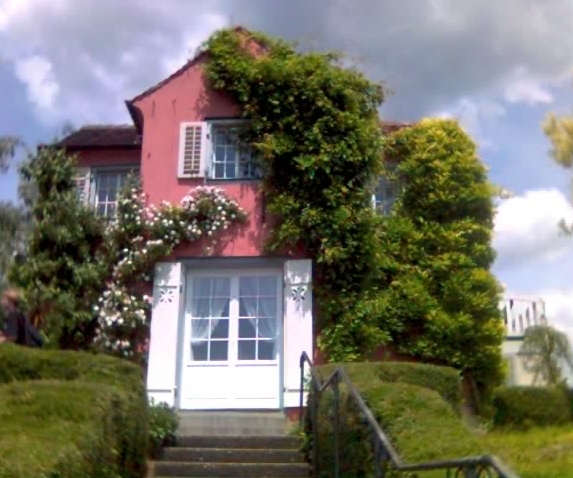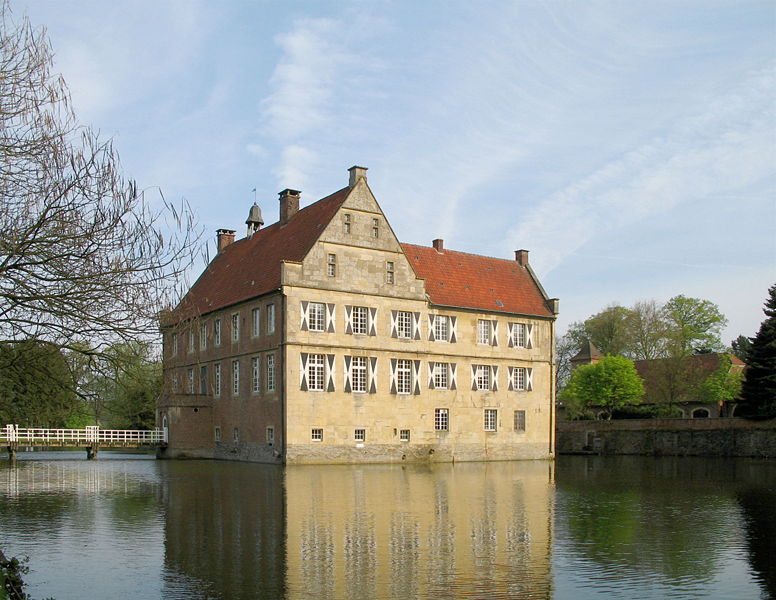<Back to Index>
- Astronomer Simon Marius, 1573
- Writer Annette Elizabeth von Droste-Hülshoff, 1797
- President of Czechoslovakia Gustáv Husák, 1913
PAGE SPONSOR


Anna Elizabeth von Droste-Hülshoff, known as Annette von Droste-Hülshoff (January 10, 1797 – May 25, 1848), was a 19th century German author, and one of the most important German poets.
She was born at the family castle called Burg Hülshoff (now a part of Havixbeck) inside the Prince - Bishopric of Münster into an aristocratic, Catholic family of Westphalia. She was educated by private tutors and began to write as a child. Her earliest poems are derivative and conventional but in 1820 her work began to show marked originality when she embarked on a cycle of religious poems, Das geistliche Jahr ("The Spiritual Year"). Droste intended to write one poem for each Sunday and Feast Day of the church year and the cycle was meant to please her devout grandmother, but when Droste had completed 25 poems, she realised they were too personal and showed too many traces of spiritual doubt, so she shelved the work until 1839 when a friend persuaded her to complete the series. Even then she did not publish the poems and they were only offered to the public posthumously in 1851.
In the summer of 1820 Droste became emotionally involved with two men, Heinrich Straube and August von Arnswaldt, but both ended by rejecting her. When her father died in 1826 she moved with her mother and sister to a small house in the country called Rüschhaus. Here she composed more poetry, but not prolifically, publishing her first collection in 1838. It contained three narrative poems (Das Hospiz auf dem großem Saint-Bernard, Das Vermächtnis des Arztes and Die Schlacht in Loener Bruch) and a handful of lyrics. Although they were issued under the name "Annette Elisabeth von D.H.", her family did not approve.
The year 1840 marked a turning point in her career, however. The 26 year old poet Levin Schücking had published an admiring review of Droste's collection and sought her help in writing his own book, Das malerische und romantische Westfalen. The two soon formed a close friendship and Droste wrote a number of ballads for inclusion in the book. Schücking encouraged her renewed literary creativity. In the winter of 1840 - 1841 she wrote her famous novella Die Judenbuche (published 1842). The following autumn and winter, Droste and Schücking stayed at her brother - in - law, Baron Joseph Maria Christoph von Lassberg's, castle on Lake Constance. Here Schücking told her that her talent lay in lyric poetry, which relied on rare moments of inspiration. Droste disagreed: she had no problem composing poetry in her head but had difficulty writing it down and the failure of her first book (it had sold only around a hundred copies) had not encouraged her to make the effort. Now she had a sympathetic reader in Schücking, she began to write in earnest, producing about fifty poems between October 1841 and April 1842. Many were inspired by the Westphalian countryside around her. These and other poems were collected in Gedichte, issued by Cotta in 1844. This time Droste used her full name on the title page. The profits enabled her to buy a small house near Meersburg, where she lived from 1846 until her death in May 1848, probably from tuberculosis. Her final poems appeared posthumously in the collection Letzte Gaben, edited by Schücking.
The
critic Margaret Atkinson wrote: "In the history of German poetry she is
an isolated and independent figure. She shares with the Romantic
writers an awareness of the power of man's imagination and a keen sense
of his exposed and precarious position in a world of danger and
mystery. But her poetry has none of the vagueness of emotional mood and
the sweetness of sound that characterize theirs. Nor did she intend
that it should. Indifferent to contemporary taste, she pursued her own
ideals in her own way. 'Ich mag und will
jetzt
nicht berühmt werden,' she once wrote, 'aber nach hundert Jahre möcht ich gelesen werden.' And
indeed she was ahead of her time. Her keen sensory perception and her
precise recording of phenomena make her appear as a herald of the new
realistic literature of the latter part of the century. With her
unusual combination of imaginative vision with close accurate
observation and depiction of reality, she thus stands at the point of
transition between Romanticism and Realism and does not belong wholly
to either."

